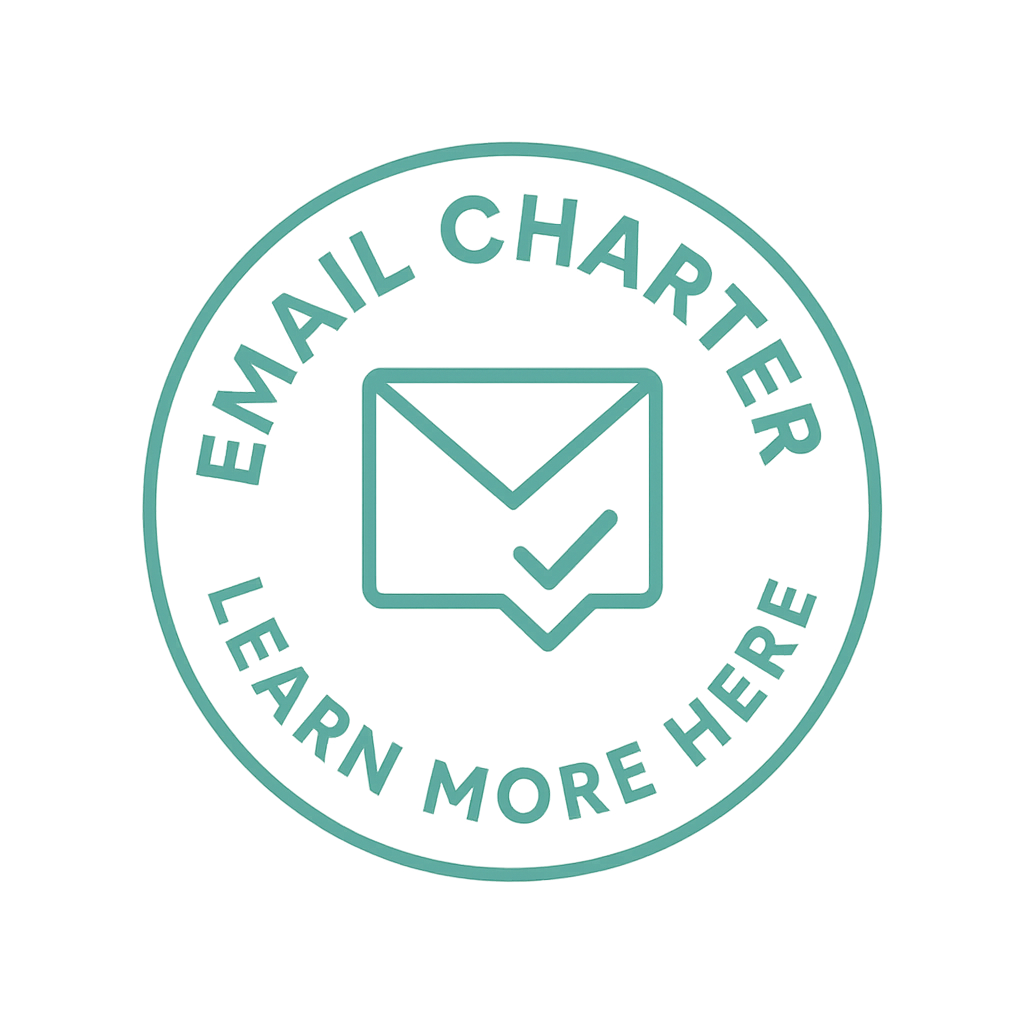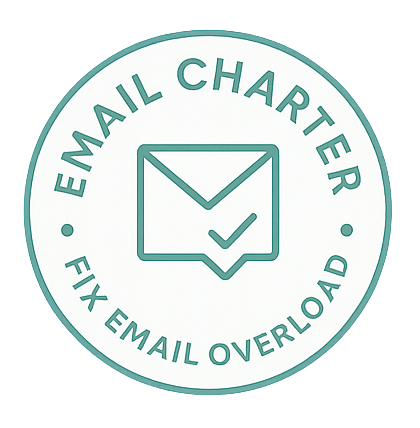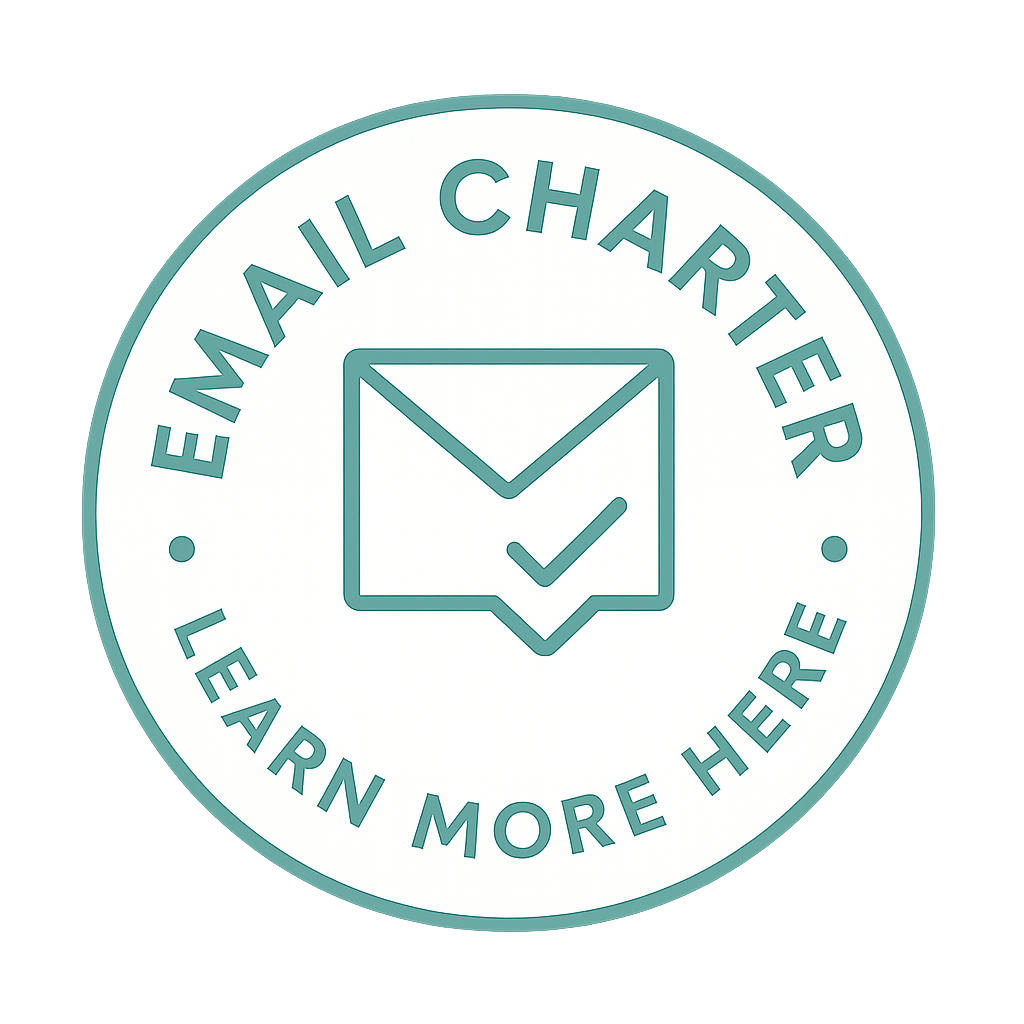Email Charter
Tips to avoid email overload | An adapted version of the Email Charter.
This webpage, unlike others, does not use a purchased domain, ensuring your email signature link to the charter remains future-proof as the URL will not expire.
The original charter started as a blog post by TED Curator Chris Anderson and TED Scribe Jane Wulf. Some contributors to the original Charter are listed here.
Share the Email Charter by adding it to your email signature.
1. NNTR / EOM
If your email message doesn’t require a reply, add NNTR (No need to respond) to the Subject line or the end of your message.
If your message can be expressed in half a dozen words, just put it in the subject line, followed by EOM (End of Message).
2. Respect Recipients’ Time (TLDR)
As the sender, you must minimise the time the email will take to process. Consider adding a one-sentence summary at the beginning.
TLDR - Too Long Didn’t Read.
E.g. “TLDR: Inspection is Wednesday, need audit files prepared.” / “TLDR: Need to see a draft of X by Friday.”
3. Attack Attachments
Consider if the attachment is needed - for example, is it already uploaded to an online repository (Google Drive, OneDrive, Dropbox, Sharepoint), could you add the user as a collaborator on the file? Or allow viewing access via a link? This reduces the size of your email both in terms of file size and the time it takes to process.
Don’t use graphics files as logos or signatures that appear as attachments. Instead, insert the image from URL - this prevents the image from being included as an attachment. Time is wasted trying to see if there’s something to open (it also takes more server power to send - which isn’t great for the environment!).
If you use embedded images, consider their accessibility. Ensure you add alt-text/descriptive text to images so that screen readers can read them out. Here are instructions for Microsoft Outlook, and general instructions irrespective of email provider.
4. Cut Contentless Responses
You don’t need to reply to every email, especially not those that are themselves clear responses. An email saying “Thanks for your note. I’m in.” does not need you to reply “Great.” That just cost someone another 30 seconds.
5. Short or Slow Responses are Not Rude
Just because you can respond fast doesn’t mean you should. It is okay if replies take a while to come. Please don’t take it personally.
6. Make Subject Lines and Content Clear
Start with a subject line that clearly labels the topic. Try including a status category
[Info], [Action], [Time Sens], [Low Priority]
Use crisp, muddle-free sentences. If the email has to be longer than five sentences, ensure the first provides the primary reason for writing. Avoid strange fonts and colours.
Use these plain English tips to save others time AND make your communication more effective.
TOOL: Hemingway Editor – Helps you identify passive voice, lengthy sentences, and complex words.
7. Stop Open-Ended Questions
It isn’t helpful to send four long paragraphs followed by “Thoughts?”. Even well-intended but open questions like “How can I help?” may not be that helpful. Email generosity requires simplifying easy-to-answer questions.
“Can I help best by a) calling, b) visiting or c) staying out of it?!”
8. Slash Surplus CCs
CCs are like mating bunnies. You are dramatically multiplying the total response time for every recipient you add. Not to be done lightly! Please don’t default to ‘Reply All’ when there are multiple recipients. You may only need to CC a couple of people on the original thread. Or none.
9. Move People from CC to BCC
Continuing the conversation with a smaller group but still want to keep others in the loop? Move them to BCC. By doing this, you prevent them from receiving unnecessary follow-ups, while still keeping them informed of the initial communication. It’s an efficient way to reduce email clutter. When using BCC, it’s courteous to mention it in the body of the email. Start with “BCC: [names]” as the first line to ensure transparency.
You can include a link to the rules afterwards:
-reducing emails by following the Email Charter
10. Tighten the Thread
Some emails depend on context for their meaning, which generally means it’s right to include the thread. However, it should rarely extend to more than three emails. Before replying, cut any of the irrelevant text, or consider making a phone call instead.
11. Disconnect
If we all agree to spend less time doing email, we’d all get less email. Consider blocking out time at work where you don’t go online. Or commit to email-free weekends. Add an auto-responder in your off time that references this charter (see below).
Add to Email Signature
Feel free to copy any of the following suggestions into your email signature to reference the Email Charter
Save our inboxes - Read the Email Charter
Short, direct email? Find out more about the Email Charter
Consider if a reply is required - Find out more here: Email Charter
–– reducing emails by following the Email Charter
Add a badge to your email signature for a more visual reference
* Once added to your email signature, just make sure you add the hyperlink back to this page (https://email-charter.github.io/) so that people can learn more!




